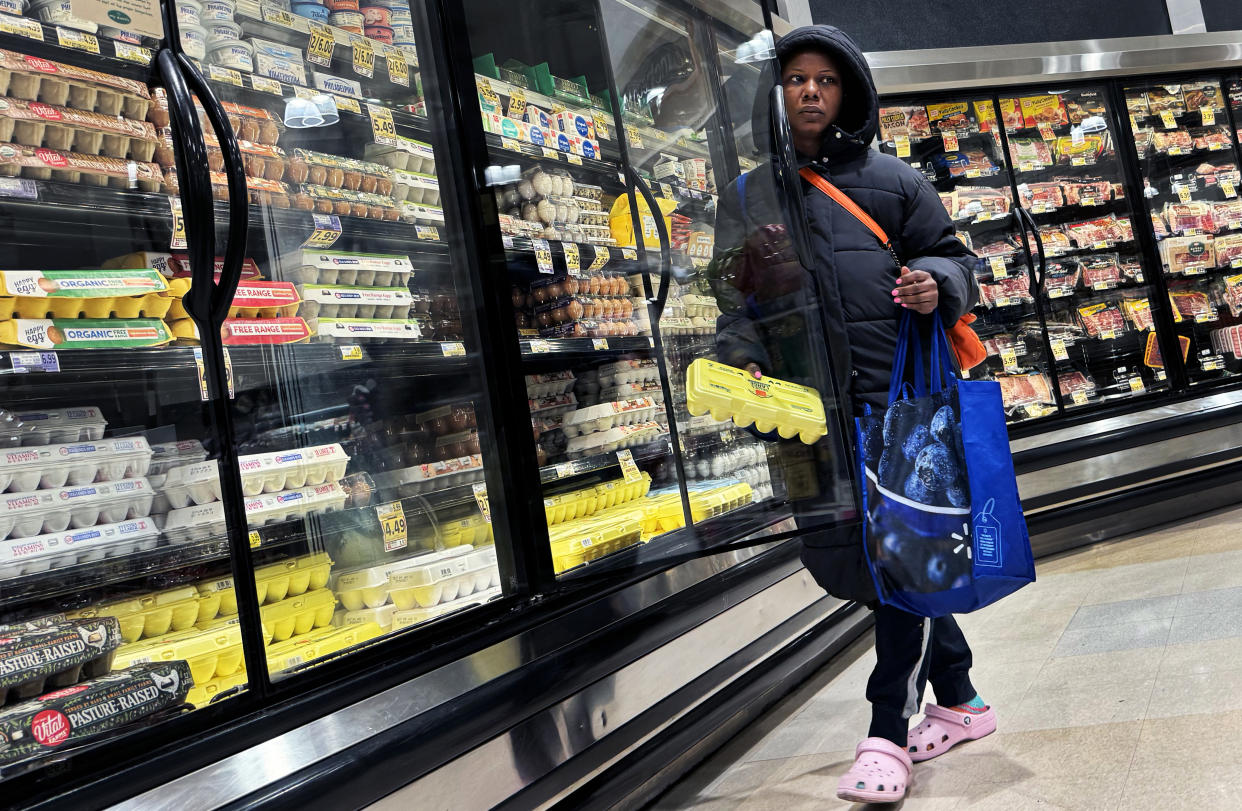Inflation: Grocery prices reaccelerate, now 25% higher than pre-pandemic
Like the rest of inflation data, grocery prices are coming in hotter after slightly moderating last year.
The cost of groceries remained flat in March and is up 1.2% year over year, according to the latest data from the Bureau of Labor Statistics. This is the first month of year-over-year acceleration in US grocery prices since August 2022, breaking an 18-month streak of deceleration, per a note from JPMorgan analyst Ken Goldman.
Since COVID began in March 2020, the cost of food at home has jumped 24.6%.
But the cost of dining out continues to grow at a higher pace due to persistent labor inflation, higher commodities costs, and other reasons. Since COVID, the price of dining out has increased 25.6%.
In March, meals at restaurants and bars cost 4.2% more than a year ago, though it's the smallest 12-month change since June 2021, per BLS economist Steve Reed. Prices are up 0.3% compared to February.
Reed said that restaurant prices have been "a little bit slower to decelerate, but it has, sort of, finally been decelerating recently."
Consumers are still paying up, Wells Fargo agricultural economist Michael Swanson told Yahoo Finance.
"As consumers ... we haven't said no, yet. When you go out and look at restaurants, they're still quite full ... so the restaurant industry is saying, 'Okay, if the demand is there, I'm going to price accordingly,'" Swanson said.
Some grocery items are cheaper compared to the month prior, including cereal and bakery products (down 0.9%), ham (down 2.7%), shelf-stable fish and seafood (down 1.9%), ice cream and related products (down 0.5%), butter (down 5%), and peanut butter (down 2.4%).
Cereal and bakery products saw their largest month-over-month decrease since the BLS first started monitoring the index in 1989, per Reed. Swanson said "competition has caught up" for producers within this category, driving down prices.
"They're really [starting] to focus on market share. They're using those promotions, whether it's buy one, get one; coupons; all those traditional ways of trying to get consumers to buy their brand and not somebody else's," he said.
Butter saw its biggest month-over-month drop since May 2002, while sugar and sweets had their largest decline since July 2020. The category has been under pressure as cocoa prices surpassed $10,000 per metric ton for the first time last month.
Compared to a year ago, though, sweets are up 4.3%, as producers face higher costs when it comes to ingredients, packing, labor, and transportation.
"The consumer is thinking [sweets companies] are making outrageous profits, but when we look at the industry statistics, they're well below where they were pre-COVID ... even further below where they were maybe back five, six years ago," Swanson said.
For example, Hershey's (HSY) operating profit declined 11.8% year over year to $464.3 million in Q4 2023.

Prices ticked higher in March in categories such as eggs (up 4.6% month over month), lettuce (5.9%), pork (1.1%), poultry (1.5%), and beef and veal (0.2%).
When it comes to eggs, the cost of a dozen large grade A eggs is $0.01 lower compared to February and now sits at $2.99. Prices are down 6.8% year over year, but the index is "very volatile," Reed said.
Last week, top US egg producer Cal-Maine Foods (CALM) reported another case of avian influenza, or bird flu, at its Texas facility. The impact of the flu cannot be eliminated entirely, said Swanson, so now the industry has to focus on reducing the severity of the issue and mitigating the spread of the disease.
Lettuce saw the highest monthly jump since July 2019, up 5.9% in March and up 5.8% compared to last year, as seasonality and trucking costs created volatility in pricing, according to Swanson.
Beef and veal prices are up 7.6% compared to last year as cattle supply remains lower. The cost of ground beef saw an increase of $0.20 last month to $5.42 per pound.
Swanson said the "sticking point" is that producers are finding that it's "not very profitable even at today's prices."
"People need to make a living; whether it is fixing cars, or being nurses, or being bankers, or being farmers, they need to make a living. Today, we simply can't have $3 or $4 hamburger," he said.
Read the latest news on inflation and what it means for the Federal Reserve:
Higher gas prices helped drive hotter-than-expected inflation in March
Another hot inflation reading fans fears Fed will push back rate cuts
Why auto insurance costs are rising at the fastest rate in 47 years
—
Brooke DiPalma is a senior reporter for Yahoo Finance. Follow her on Twitter at @BrookeDiPalma or email her at bdipalma@yahoofinance.com.
Click here for the latest economic news and indicators to help inform your investing decisions.
Read the latest financial and business news from Yahoo Finance






